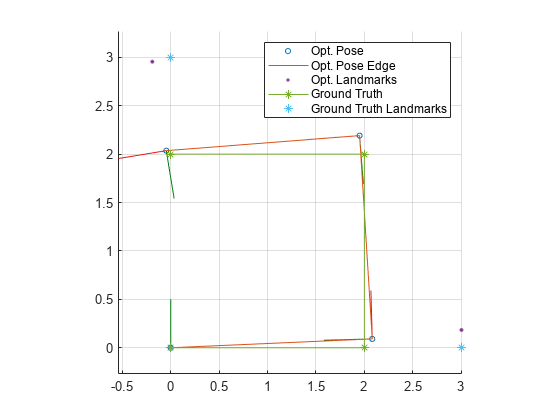factorPoseSE2AndPointXY
Description
The factorPoseSE2AndPointXY object contains factors that each describe the
relationship between a position in the SE(2) state space and a 2-D landmark point. You can use
this object to add one or more factors to a factorGraph
object.
Creation
Description
F = factorPoseSE2AndPointXY(nodeID)factorPoseSE2AndPointXY object, F, with
the node identification numbers property NodeID set to
nodeID.
F = factorPoseSE2AndPointXY(___,Name=Value)factorPoseSE2AndPointXY([1
2],Measurement=[1 5]) sets the Measurement property of
the factorPoseSE2AndPointXY object to [1 5].
Properties
Object Functions
nodeType | Get node type of node in factor graph |

